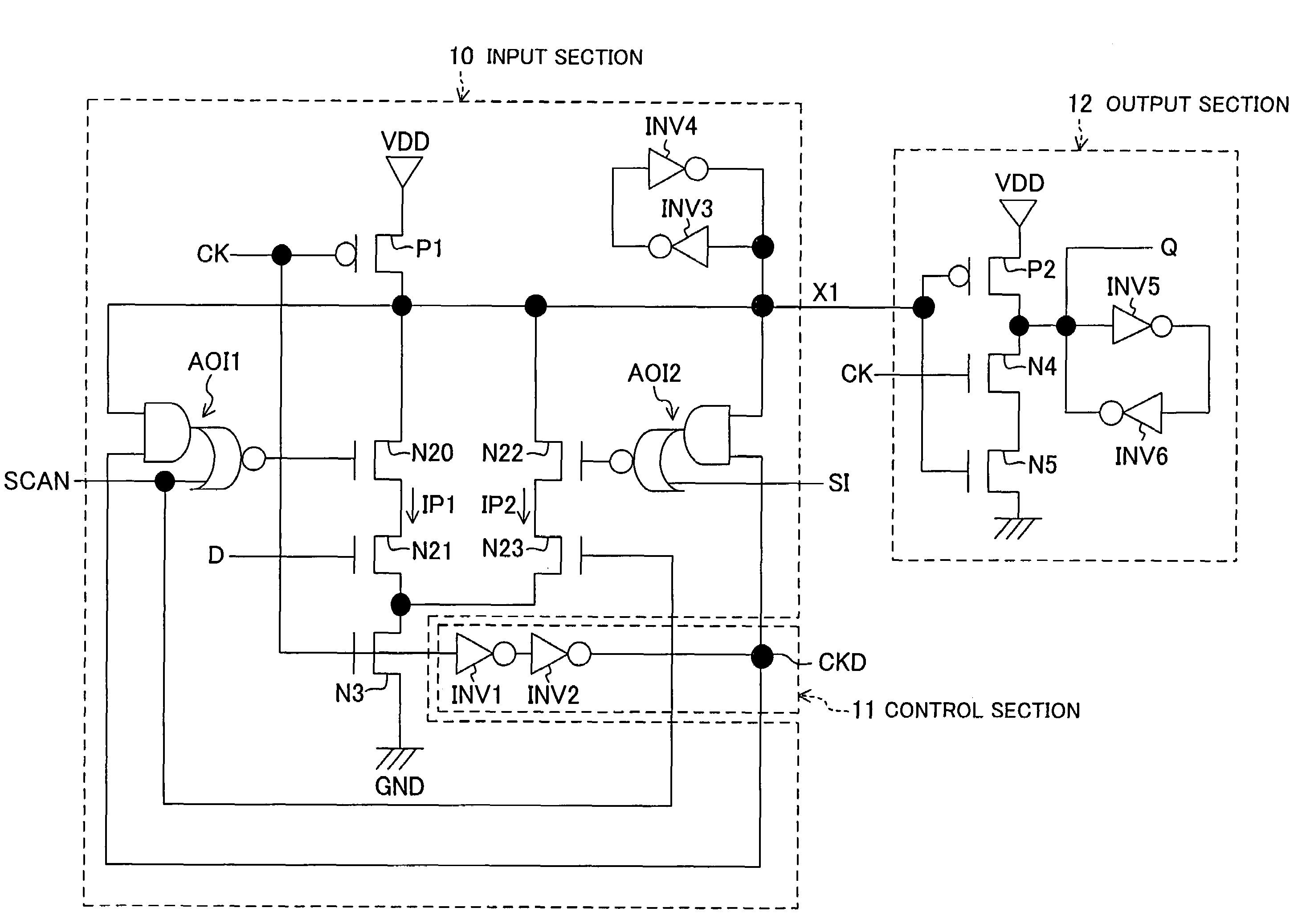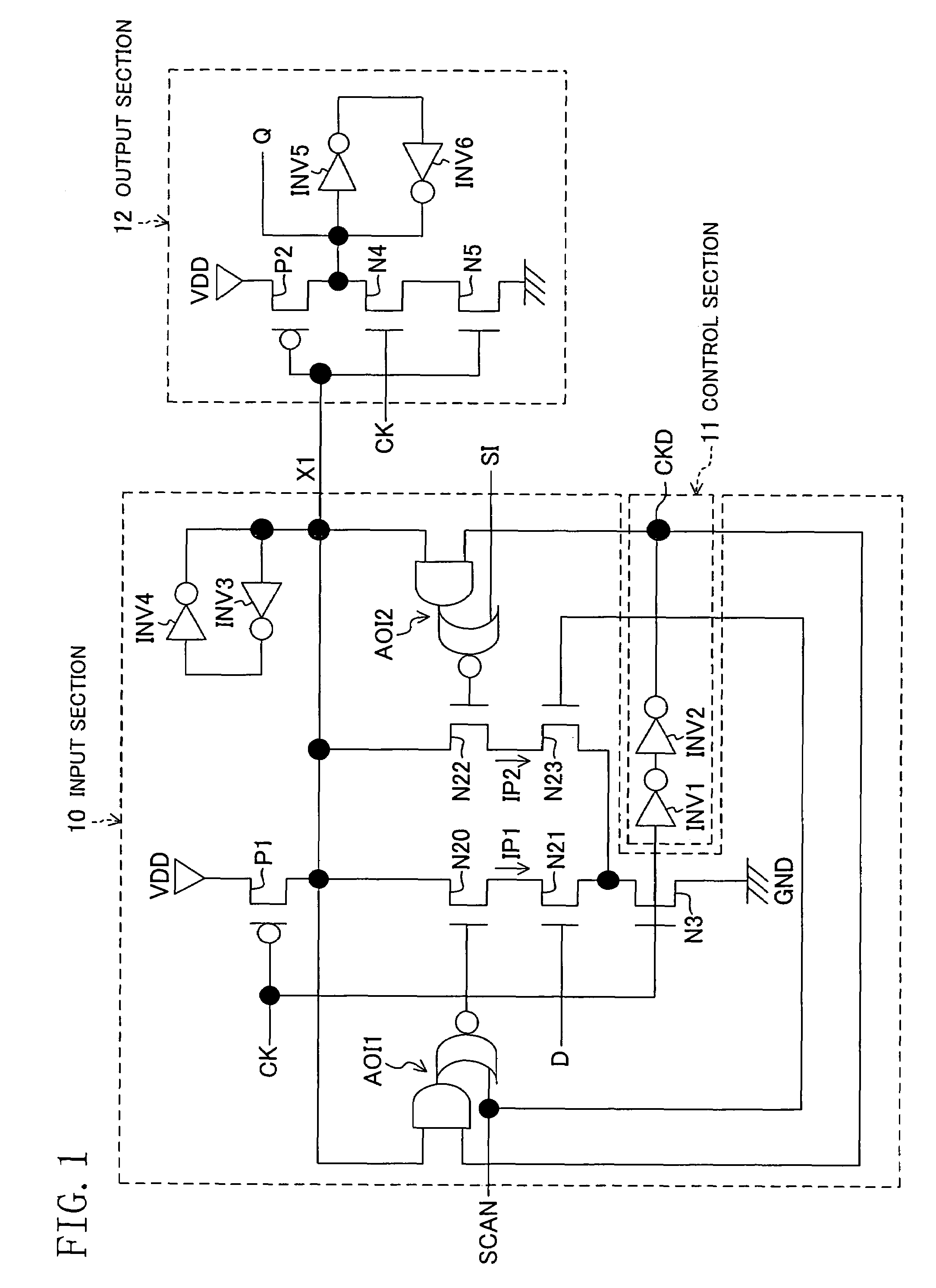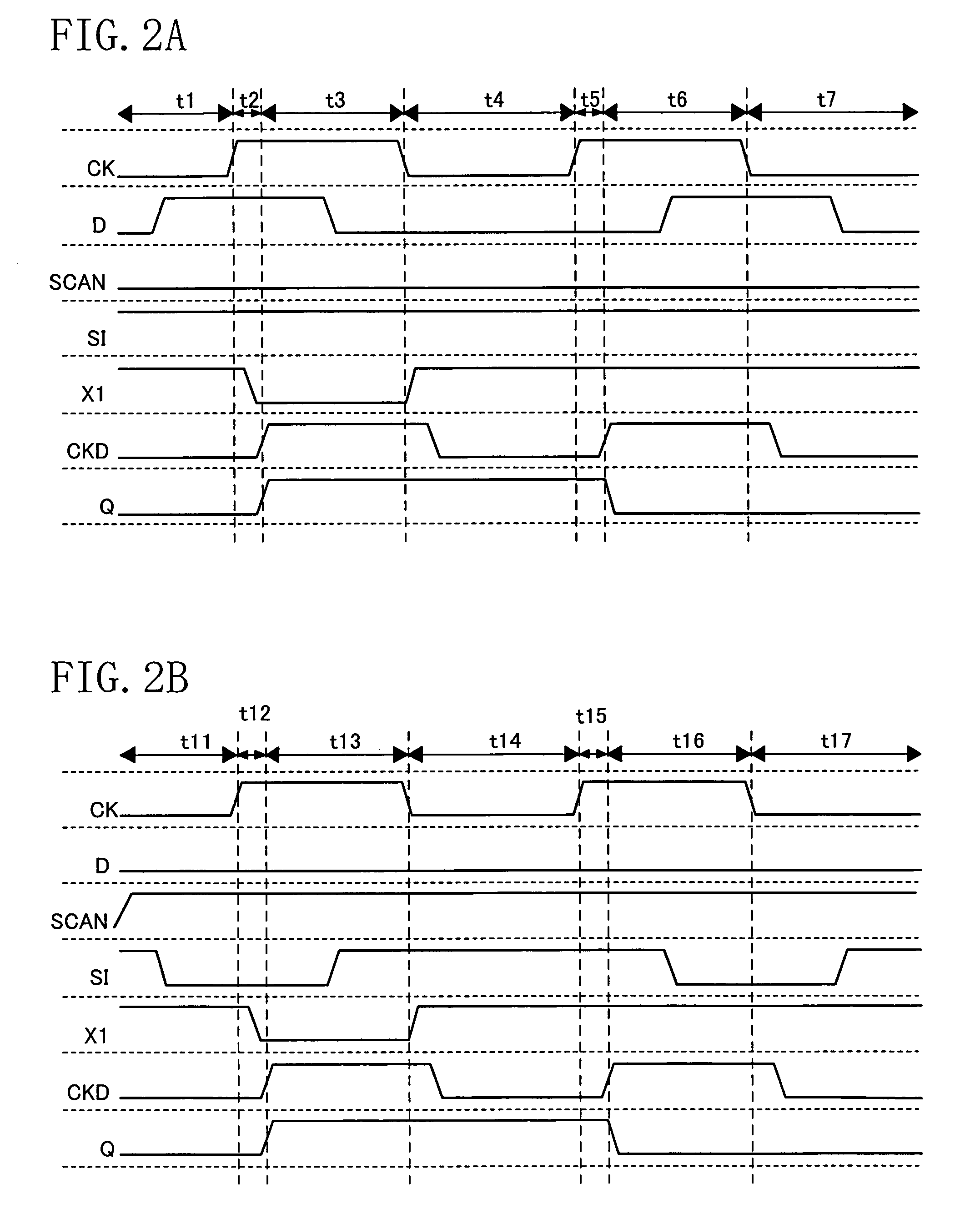Flip-flop circuit
a flip-flop circuit and circuit technology, applied in pulse generators, pulse techniques, instruments, etc., can solve the problems of long hold time and increase delay time of flip-flop circuits, and achieve the effect of shortening hold time and speed
- Summary
- Abstract
- Description
- Claims
- Application Information
AI Technical Summary
Benefits of technology
Problems solved by technology
Method used
Image
Examples
embodiment 1
[0045]A flip-flop circuit according to Embodiment 1 of the present invention will now be described with reference to the drawings.
[0046]While the present invention will be described below primarily with respect to applications where the present invention is used as a scan flip-flop circuit, the present invention may be used as an ordinary flip-flop circuit with a 2-input selector.
[0047]FIG. 1 is a circuit diagram showing a scan flip-flop circuit of the present embodiment, and FIGS. 2A and 2B are timing diagrams showing the operation thereof.
[0048]In FIG. 1, D denotes a data signal (the first data signal), CK a clock signal, SI a test input signal (the second data signal), SCAN a test selection signal (the input selection signal), Q an output signal, CKD a node, X1 a node, VDD the power supply, and GND the ground.
[0049]In FIG. 1, 10 denotes an input section using a dynamic circuit, 11 a control section, and 12 an output section using a static circuit. The scan flip-flop circuit inclu...
embodiment 2
[0070]A scan flip-flop circuit according to Embodiment 2 of the present invention will now be described with reference to the drawings.
[0071]FIG. 4 is a circuit diagram showing a scan flip-flop circuit of the present embodiment, and FIGS. 5A and 5B are timing diagrams showing the operation thereof.
[0072]In FIG. 4, D denotes a data signal (the first data signal), CK a clock signal, SI a test input signal (the second data signal), SCAN a test selection signal (the input selection signal), Q an output signal, NQ an inverted output signal, X1 to X4 nodes, VDD the power supply (the first potential supply node) of a predetermined power supply potential (the first potential), and GND the ground (the second potential supply node).
[0073]In FIG. 4, 20 denotes an input section, 21 a latch circuit, 22 a control section having a node (the first node) X2, and 23 an output section. The scan flip-flop circuit includes P-type transistors (the transistors of the first polarity) P1 to P5, N-type trans...
embodiment 3
[0093]A scan flip-flop circuit according to Embodiment 3 of the present invention will now be described with reference to the drawings.
[0094]FIG. 6 is a circuit diagram showing a scan flip-flop circuit of the present embodiment. In the configuration of FIG. 6, one or more of the P-type transistors are shared between the NOR circuits NR1 and NR2 of the flip-flop circuit, as compared with that of Embodiment 2 shown in FIG. 4. In the present embodiment, like elements to those of Embodiment 2 will be denoted by like reference numerals and will not be further described below. In FIG. 6, P6 to P8 denote P-type transistors, and N9 to N12 N-type transistors. The P-type transistor P6 is the transistor that is shared between the NOR circuits NR1 and NR2.
[0095]While the NOR circuits NR1 and NR2 shown in FIG. 4 require eight transistors, the present embodiment realizes a similar function with seven transistors, including the P-type transistors P6 to P8 and the N-type transistors N9 to N12.
[0096...
PUM
 Login to View More
Login to View More Abstract
Description
Claims
Application Information
 Login to View More
Login to View More - R&D
- Intellectual Property
- Life Sciences
- Materials
- Tech Scout
- Unparalleled Data Quality
- Higher Quality Content
- 60% Fewer Hallucinations
Browse by: Latest US Patents, China's latest patents, Technical Efficacy Thesaurus, Application Domain, Technology Topic, Popular Technical Reports.
© 2025 PatSnap. All rights reserved.Legal|Privacy policy|Modern Slavery Act Transparency Statement|Sitemap|About US| Contact US: help@patsnap.com



